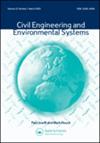城市规模回用对供水弹性和水质影响的系统分析
IF 1.1
3区 工程技术
Q3 ENGINEERING, CIVIL
引用次数: 0
摘要
利用高级水处理技术(AWT)回用水越来越受到追求供水可靠性的城市地区的欢迎。在面临水资源短缺的城市,大规模回用如何支持可靠性?回用操作如何影响水质、能源使用和节水?本文对城市中水回用及其对供水和水质的影响进行了系统分析。在美国加利福尼亚州洛杉矶县的案例研究中,利用水文经济模型来评估在城市水资源保护、干旱引起的水资源短缺以及供需成本和效益的情况下,再利用对供水的贡献。结果表明,AWT是一种可行的供应来源,特别是在与保护相结合的情况下。在模拟的场景中,再利用提供了多达30%的区域供应。当进口可用水量为历史值的50%或更低时,AWT的新水回用就可行了。该县现有的间接饮用水再使用业务仍然很重要。在没有节约用水的情况下,系统范围内操作的能源强度随着更大的重复使用而增加。模拟的流入污水处理厂的流量与历史值相似,但极端的流量事件可能带来风险。本文提供了一个整体框架来评价水回用作为城市水管理的一个组成部分。本文章由计算机程序翻译,如有差异,请以英文原文为准。
Systems analysis of metropolitan-scale reuse with effects on water supply resilience and water quality
Water reuse with Advanced Water Treatment (AWT) is increasingly appealing for urban areas seeking water supply reliability. In cities facing water scarcity, how can large-scale reuse support reliability and how do reuse operations affect water quality, energy use, and water conservation? This paper presents a systems analysis of metropolitan-scale water reuse and its effects on water supply and quality. For the case study of Los Angeles County, California, USA, hydroeconomic modeling is used to evaluate reuse as a contributor to water supply given urban water conservation, drought-induced water scarcity, and costs and benefits for supply and demand. Results indicate that AWT can be a viable source of supply especially when coupled with conservation. Across modeled scenarios, reuse provides as much as 30% of regional supplies. New water reuse with AWT becomes viable when imported water availability is 50% or less of historic values. Existing indirect potable reuse operations in the county remain important. Systemwide energy intensity of operations increases with greater reuse in the absence of water conservation. Modeled influent flow rates to wastewater treatment plants resemble historical values, but extreme flow events could pose risks. The paper offers a holistic framework to evaluate water reuse as a component of urban water management.
求助全文
通过发布文献求助,成功后即可免费获取论文全文。
去求助
来源期刊

Civil Engineering and Environmental Systems
工程技术-工程:土木
CiteScore
3.30
自引率
16.70%
发文量
10
审稿时长
>12 weeks
期刊介绍:
Civil Engineering and Environmental Systems is devoted to the advancement of systems thinking and systems techniques throughout systems engineering, environmental engineering decision-making, and engineering management. We do this by publishing the practical applications and developments of "hard" and "soft" systems techniques and thinking.
Submissions that allow for better analysis of civil engineering and environmental systems might look at:
-Civil Engineering optimization
-Risk assessment in engineering
-Civil engineering decision analysis
-System identification in engineering
-Civil engineering numerical simulation
-Uncertainty modelling in engineering
-Qualitative modelling of complex engineering systems
 求助内容:
求助内容: 应助结果提醒方式:
应助结果提醒方式:


